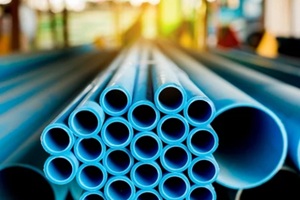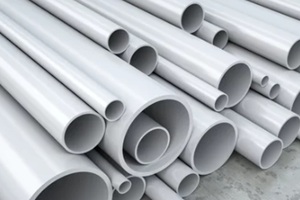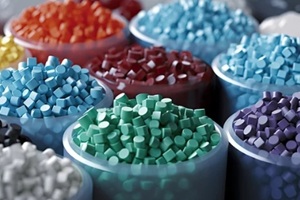April 24, 2025

Polyvinyl chloride (PVC) is one of the most widely used plastic materials globally, playing a fundamental role in industries ranging from construction to medical packaging. However, its inherent brittleness and reliance on chemical additives to stabilize its properties have long posed challenges.
These additives slowly escape from the material over time, causing degradation and the environmental release of microplastics. To address these issues directly, researchers have developed an innovative method to chemically bond stabilizing agents to PVC, enhancing its durability and sustainability.
With this innovation, industry leaders can adopt a sustainable approach that mitigates environmental risks and boosts product lifespan and efficiency.
Polyvinyl chloride, widely used in construction materials, toys, and medical packaging, holds the position of the third most commonly utilized plastic globally. Despite its versatility, pure PVC is inherently brittle and thermally sensitive, requiring chemical additives known as plasticizers to make it usable in various applications. These plasticizers temporarily improve PVC’s flexibility and stability, but their benefits come with significant drawbacks.
Over time, they leach out of the material, leaving it prone to cracking and deterioration. This process not only shortens the lifespan of PVC products, it also contributes to the release of harmful microplastics into the environment.
While existing methods offer short-term solutions to stabilize PVC, they fail to address its long-term durability and environmental footprint. As plasticizers degrade, they break down into organic compounds and microplastics that pose risks to wildlife, pollute natural habitats, and contaminate the food supply.
Solving these issues demands innovations that embed stabilizing additives within PVC’s molecular structure permanently. Taking this approach could transform how PVC products are designed, paving the way for enhanced durability, safety, and environmental sustainability.
Join our PLASTICS Pulse newsletter today to receive updates on within the plastic industry while staying informed & connected.
A groundbreaking method developed by researchers introduces a more sustainable approach to stabilizing PVC by chemically bonding plasticizers to its polymer backbone. Under the leadership of Christo Sevov, an associate professor at The Ohio State University, this innovation uses electricity to graft stabilizing agents securely onto PVC molecules.
Unlike traditional methods that rely on mixing additives into the material, this approach integrates the stabilizers at a molecular level, creating a bond that prevents leaching. The result is a material that resists degradation over time while retaining its structural integrity and performance in demanding applications.
With notable environmental and operational benefits, this advancement sets a new standard for sustainability. The ability to permanently stabilize PVC significantly extends the material’s lifespan, reducing the frequency of replacement and waste generation.

As plasticizers no longer leach into the environment, the release of harmful microplastics into ecosystems diminishes, addressing a major pollution concern. Furthermore, this method allows for customization of PVC’s properties, enabling manufacturers to tailor the material for specific needs, such as enhanced flexibility for medical packaging or increased hardness for construction materials.
The reduction of microplastic pollution has wide-reaching implications for both human and ecological health. Through the containment of these particles, this method advances efforts to safeguard air, water, and food from environmental pollution.
Achieving commercial scalability for chemically bonded plasticizers required overcoming significant challenges in big-molecule engineering. Modifying large polymer molecules like PVC is inherently complex, as reactions originally designed for small molecules often fail when applied to polymers.
To address this, researchers optimized the catalysts used in their process, fine-tuning the chemical reactions to work effectively at a larger scale. In addition to bonding stabilizers to PVC, this innovation highlighted how polymer chemistry can lead the way in advancing sustainable recycling and upcycling practices.
Traditional PVC recycling is inefficient due to the high temperatures required, which degrade the material, and by extending the lifespan of PVC through more durable stabilization, this breakthrough offers a pathway to reduce material waste and improve the feasibility of recycling initiatives.
Safer, longer-lasting PVC could transform sectors such as construction, where durable plastic materials are essential, and medical packaging, which demands reliability and safety. Consumer goods, another major market for PVC, would also benefit from products with enhanced performance and reduced environmental impact.
As this method scales commercially, it could play a fundamental role in reducing microplastic pollution, addressing growing regulatory pressures, and meeting consumer demands for sustainable solutions.

The development of chemically bonded plasticizers marks a transformative step in enhancing the durability and sustainability of PVC.
Providing a solution to plastic material degradation and microplastic pollution, this innovation helps combat environmental issues while expanding possibilities for product performance. For plastics manufacturers and industry leaders, adopting such advancements is not just an opportunity but a responsibility in an increasingly sustainability-focused world.
To stay at the forefront of these innovations and access resources that can help implement them, consider joining PLASTICS, the Plastics Industry Association. Membership offers insights into groundbreaking technologies, access to recycling initiatives, and a platform to shape the future of sustainable plastics.
PLASTICS and the Future Leaders in Plastics (FLiP) Committee are devoted to supporting and encouraging the next generation of plastics leaders who will play a crucial role in the innovation, technology and future of the plastics industry. FLiP’s mission is to provide young professionals under the age of 40 the exposure, education and resources they need to build lifelong careers in plastics. Want to join? Want to get your employees involved? Email: flip@plasticsindustry.org